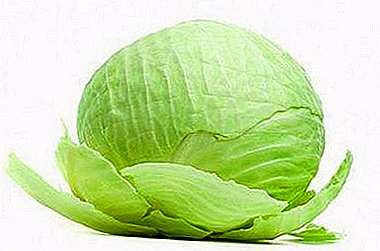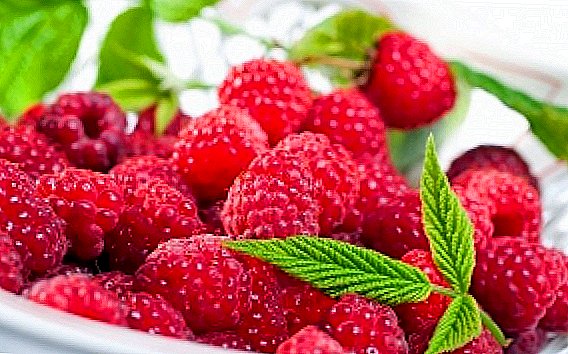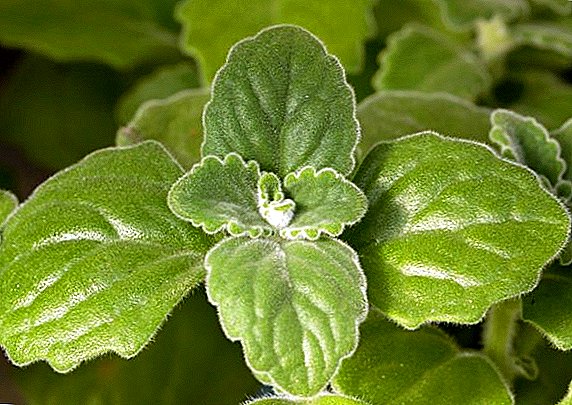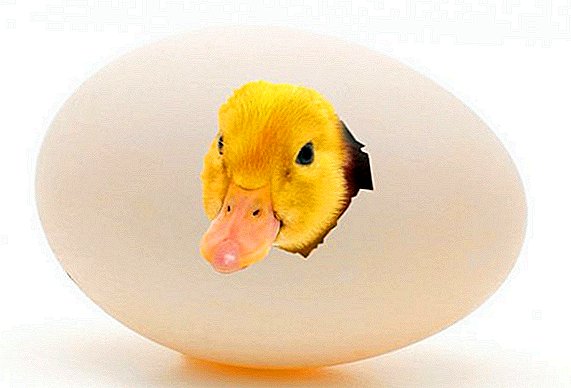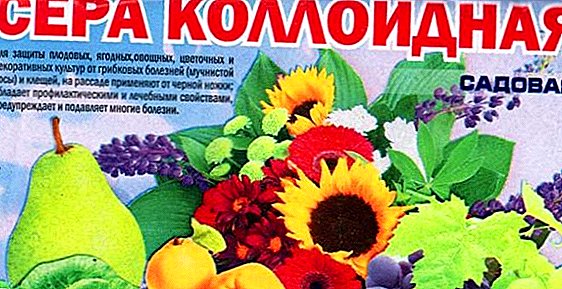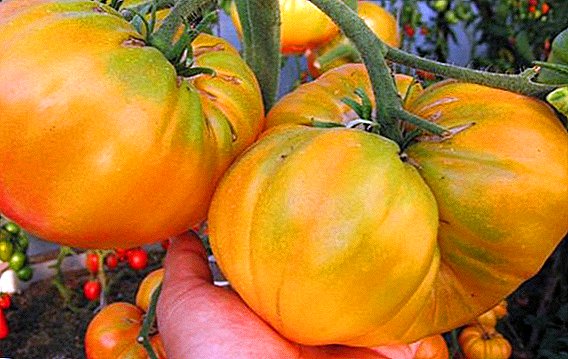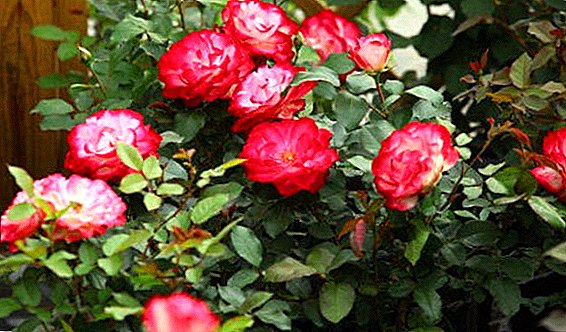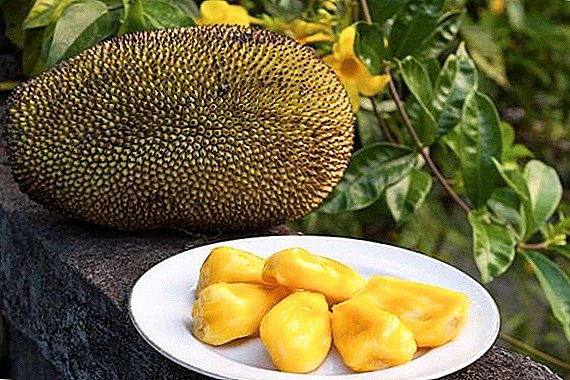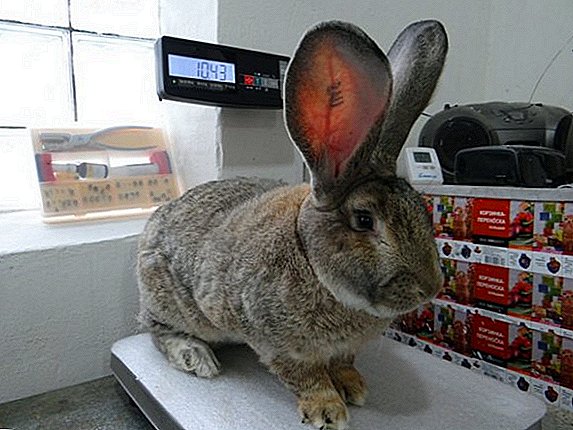 Giant rabbits or giants call those representatives of the hare family, whose average weight reaches 5 kg or more. Farmers prefer such breeds for a large yield of meat products, ease of maintenance and feeding. In addition, from some varieties, you can get a luxurious fur coat. But the breeds of giant rabbits are not without some drawbacks. Each type has its own productive differences and peculiarities of its content, which we will talk about today.
Giant rabbits or giants call those representatives of the hare family, whose average weight reaches 5 kg or more. Farmers prefer such breeds for a large yield of meat products, ease of maintenance and feeding. In addition, from some varieties, you can get a luxurious fur coat. But the breeds of giant rabbits are not without some drawbacks. Each type has its own productive differences and peculiarities of its content, which we will talk about today.
Distinctive features of giant rabbits
The main distinguishing feature of giant breeds is weight - all giant rabbits weigh on average 6-12 kg, although sometimes there are real heavyweights. Most of the giant rabbits are unpretentious in care and feeding, many breeds tolerate low temperatures, so they are recommended to be kept outside, but the meat varieties are optimally kept in the basement.  Given their large size, it is necessary to provide them with appropriate cells: they must be spacious, clean and dry. Giant rabbits cannot be kept together - each individual should have a separate room, with the exception of the bunny and offspring.
Given their large size, it is necessary to provide them with appropriate cells: they must be spacious, clean and dry. Giant rabbits cannot be kept together - each individual should have a separate room, with the exception of the bunny and offspring.
The advantages of giant rabbits varieties:
- Weight. At the age of 3-4 months, baby rabbits of giant breeds weigh as adult individuals of small species, which is 50% of their standard weight.
- Good maternal instincts. Rabbits of such breeds are excellent moms: they never give up, do not eat and do not trample their offspring. It is also worth noting their high milkiness - females can easily feed a dozen babies up to the age of 1.5 months.
- High fecundity. On average, there are up to 10 baby rabbits in a litter of giant rabbits.

By weight characteristics, giant rabbits are arranged in this order (from the heaviest to the least large):
- Risen.
- Soviet chinchilla.
- Belgian giant (flandr).
- Gray giant.
- White giant.
- Giant butterfly
- The Angora Giant.
- Viennese blue.
- French ram.
Learn how to care for rabbits at home, how many rabbits live on average, and how long the molt lasts in rabbits.
Top 9 heavyweights with description and photo
On the territory of post-Soviet countries, the white, gray and Belgian giants are the most popular, but in addition to these species there are at least a dozen species worthy of attention.
White giant
White giants are kept for predominantly skin products, since their fleshiness is average. The peculiarity of rabbits is that all of them are albinos, they have snow-white, thick and dense skin without a single blotch of a different shade, as well as scarlet eyes due to the lumen of blood vessels.  Representatives of the breed have a proportionally folded, strong body, an elongated body with a pronounced, convex sternum, narrow back and rounded croup. Paws are powerful, long, widely set. The head is medium in size, in females it is slightly oblong, in males it is more rounded.
Representatives of the breed have a proportionally folded, strong body, an elongated body with a pronounced, convex sternum, narrow back and rounded croup. Paws are powerful, long, widely set. The head is medium in size, in females it is slightly oblong, in males it is more rounded.
Did you know? Density of white giant rabbits is huge: 1 square meter. cm body covered with 23 thousand hairs!
- Adult weight: 4-6.5 kg.
- Body length: 55-65 cm
- Lethal age: 10 months.
- Meat yield: 50 %.
- Around: 7-9 rabbits (sometimes up to 14).
Gray giant
The gray giant rabbit breeds were registered in the 50s of the last century and were bred in Ukraine. The result of breeding were large animals with a strong, massive bones, a long, straight body and a wide chest with a dewlap. Limbs straight and wide set, powerful and thick. Ears too thick, up to 15 cm in length, create a V-shaped look. The coat of medium length and density, soft to the touch, the disadvantage is its uneven thickening. The color is mostly gray-blue, but brown and golden shades of the guard hair are also possible. 
Main characteristics:
- Adult weight: 5-6.5 kg.
- Body length: 60-75 cm
- Lethal age: 8-10 months.
- Meat yield: 57-60 %.
- Around: 8 baby rabbits.
Belgian giant (flandr)
Representatives of this breed are the best in several ways: they are the most ancient, the most common and the most weighty rabbits of meat orientation. They are the ancestors of most breeds of giants and giants among rabbits. Flanders have a very large, powerful and muscular physique.
Did you know? In rabbits, the queen is forked, so they can simultaneously bear two different litters from two different males. But such a double pregnancy is very depleting to the female, and rabbits from the second litter are often born dead.
The head is wide, large, ears at least 19 cm long, thick and wide, set vertically. The chest is wide and deep, the back is elongated, arched. The body is covered with a dense, soft fur coat with a hair length of up to 3.5 cm. Representatives of the Flandre breed are distinguished by a wide range of colors: all shades of gray, black, white, classic hare stains (agouti), kangur.  Breed is mainly used for meat products, as the skins are of low quality. Main productive characteristics:
Breed is mainly used for meat products, as the skins are of low quality. Main productive characteristics:
- Adult weight: 7 kg (sometimes up to 12 kg).
- Body length: 70-100 cm
- Lethal age: 8 months.
- Meat yield: 60 %.
- Around: 8 baby rabbits (maybe up to 15).
Viennese blue
Representatives of the breed of the Vienna blue rabbit differ in medium size and monochromatic gray or gray color of the fur coat. They are proportionally folded, the head is of medium size with vertically set ears 16 cm long. The back is straight, wide, with rounded croup and deep sternum (the females have a pronounced subgroup fold). Eyes and claws of blue or dark blue shade.  The coat is very soft due to the large amount of downy hair, thick and dense, colored with a gray or blue tint. The rabbits of the Viennese blue breed are bred mainly for the production of high-quality skins, which are used either in their natural form or to imitate the fur coat of fur animals. Main productive characteristics:
The coat is very soft due to the large amount of downy hair, thick and dense, colored with a gray or blue tint. The rabbits of the Viennese blue breed are bred mainly for the production of high-quality skins, which are used either in their natural form or to imitate the fur coat of fur animals. Main productive characteristics:
- Adult weight: 4.5-5 kg (sometimes up to 7 kg).
- Body length: 57-60 cm
- Lethal age: 6 months.
- Meat yield: 56-59 %.
- Around: 6-9 rabbits.
Riesen
Rabbits of the Riesen breed, which are also called the German giants, today are the largest members of their family. They are distinguished by a muscular, massive and powerful body, a long, broad back, a bulging chest, thick and strong legs. The head is large, the cheeks are massive, the ears are wide, up to 20 cm long, fleshy, directly set.  The eyes are dark brown, a coat of medium length (up to 4 cm), soft, very thick. The color can be very different: the classic hare color (agouti) is considered standard, but now also varieties with a black, white and blue fur coat, as well as a shade of gold are also derived.
The eyes are dark brown, a coat of medium length (up to 4 cm), soft, very thick. The color can be very different: the classic hare color (agouti) is considered standard, but now also varieties with a black, white and blue fur coat, as well as a shade of gold are also derived.
Important! German Risen is very prone to obesity, so the breed requires careful attention to the diet.
Main characteristics:
- Adult weight: 10-12 kg on average.
- Body length: 70-75 cm
- Lethal age: from 8 months.
- Meat yield: 60 %.
- Around: 8-12 baby rabbits.
French ram
Rabbits of this variety are valued not only for a large output of meat, but also for the quality and beauty of the skins. Recently, however, they prefer to keep it as pets for a calm and friendly disposition, a rather high acumen, affection for people. The French ram has a bright exterior: a large, wide head with massive, drooping cheeks, long, softly hanging ears (up to 50 cm in length), an elongated body, wide, chest deep, slightly hollow.  Limbs thick, powerful. The soft, thick coat of this animal is highly valued in the production of natural coats. Color can be different: blue, variegated, brown, white, black, spotty. Main characteristics:
Limbs thick, powerful. The soft, thick coat of this animal is highly valued in the production of natural coats. Color can be different: blue, variegated, brown, white, black, spotty. Main characteristics:
- Adult weight: 4-5 kg.
- Body length: 60-70 cm
- Lethal age: 3-4 months.
- Meat yield: 55 %.
- Around: 4-7 baby rabbits.
Important! Females of this breed can reproduce offspring only up to 3 years of age. Later childbirth can result in the death of a rabbit and cubs.
Giant butterfly (spotted giant)
The butterfly is another common type of giant rabbits, often referred to as a characteristic stripe along the back. Rabbits of this breed have a powerful, muscular body with well developed and pronounced parts: a large head, a thick, short neck and the same limbs, a broad chest and back. The ears are fleshy, thick, set in a V-shape, not less than 17 cm long. The eyes are large, dark brown.  The coat is dense, of medium length (about 3.5 cm), evenly thickened, soft and pleasant to the touch, shiny. Representatives of the breed have a very unusual, pronounced color: on the face there is a symmetrical butterfly-shaped spot, dark circles framing the eyes, and dark ears. Along the back there is a wide strip of contrasting color, there are also spots on the sides (up to 8 pieces). The main color of the body is white, the spots may be of different shades: black, brown, blue.
The coat is dense, of medium length (about 3.5 cm), evenly thickened, soft and pleasant to the touch, shiny. Representatives of the breed have a very unusual, pronounced color: on the face there is a symmetrical butterfly-shaped spot, dark circles framing the eyes, and dark ears. Along the back there is a wide strip of contrasting color, there are also spots on the sides (up to 8 pieces). The main color of the body is white, the spots may be of different shades: black, brown, blue.
Get acquainted with the best meat, decorative and fur breeds of rabbits.
Main characteristics:
- Adult weight: 6 kg (sometimes 10 kg or more).
- Body length: 67-71 cm
- Lethal age: 7-8 months.
- Meat yield: 55-60 %.
- Around: 8-10 rabbits.
Soviet chinchilla
Soviet chinchilla - another popular breed of large rabbits meat and skin orientation, sometimes the plant as a pet. These are large, muscular, well-built animals with a developed skeleton, an elongated body, a small head and vertically set, medium-length ears.  The coat is short, dense, soft to the touch, evenly thickened. The color is predominantly bluish-gray, the rim of the eyes, belly, lower part of the tail and paws are painted in a light shade. The tips of the tail and ears are shaded in black. Main characteristics:
The coat is short, dense, soft to the touch, evenly thickened. The color is predominantly bluish-gray, the rim of the eyes, belly, lower part of the tail and paws are painted in a light shade. The tips of the tail and ears are shaded in black. Main characteristics:
- Adult weight: 5-8 kg.
- Body length: 60-65 cm
- Lethal age: 6-7 months.
- Meat yield: 56-63 %.
- Around: 7-10 baby rabbits.
Angora rabbit
The name "Angora rabbit" means not one specific breed, but a whole group of animals for which the characteristic one common feature is Angora wool. The most famous breeds of Angora rabbits: German, French, English, atlas, giant. We consider the last species in more detail.
Angora giants have a very unusual, memorable appearance - at first glance, it may seem that this is not a beast at all, but simply a huge clump of long, snow-white wool. The head is wide, pointed to the nose, flat nose, ears short, decorated with tassels, eyes of a red shade. The coat on the face is much shorter than on the whole body.  The length of guard hairs is up to 20 cm, on average, 15 cm. For a month, wool can grow by 3 cm. Despite such thickness and length of wool, Angora giants almost do not shed, therefore, to get wool, they need to be cut with special machines or combed. Main characteristics:
The length of guard hairs is up to 20 cm, on average, 15 cm. For a month, wool can grow by 3 cm. Despite such thickness and length of wool, Angora giants almost do not shed, therefore, to get wool, they need to be cut with special machines or combed. Main characteristics:
- Adult weight: 4.5-6 kg.
- Body length: 50 cm
- Lethal age: 6-7 months.
- Meat yield: 55 %.
- Around: 8 baby rabbits.
Important! Caring for the hair of the Angora giants is much more difficult than for other breeds. With improper care, the fur will be confused, forming mats, because of which its further use will be impossible.
The biggest rabbits: record holders
Although the average weight of giant rabbits reaches 6-10 kg, there are real champions heavyweights, whose mass indices far surpassed the standards of their breeds. For example, in England, a rabbit named Darius weighing 22.2 kg and a body length of 130 cm was raised on the Annette Edwards farm (Worcester).
In 2010, the beast was listed in the Guinness Book of Records as the largest rabbit on the planet. With such impressive dimensions, he is obliged to an active lifestyle and a varied, abundant diet: every day the eared giant eats two cabbage heads, six apples and twice as many carrots. 
Thus, today, for breeding, you can choose not only standard breeds with an average weight and weight, but also real giants who will delight not only high meat productivity, but also the quality of the skins. However, it should be borne in mind that giant rabbits require appropriate conditions so that they can fully justify the title of the largest members of the family.


